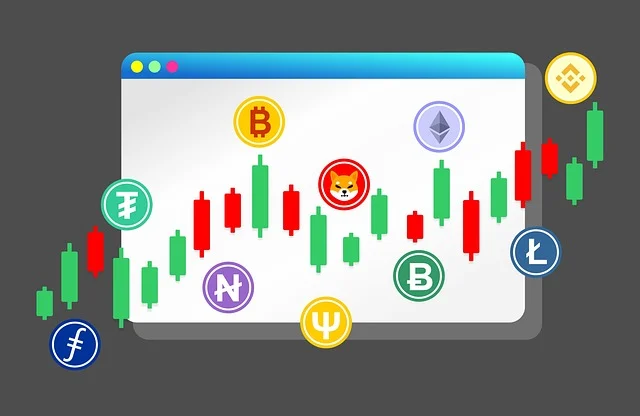Table of Contents
- The Truth About Dividend Investing: A Real Talk
- The Math Behind Dividends
- Control: Who Decides What Happens to Profits?
- Buybacks vs. Dividends
- The “No More Growth Ideas” Myth
- Selling Shares vs. Receiving Dividends
- Growth Stocks Always Win? Not So Fast.
- The Real Game: Matching Strategy to Personality
- Why Not Both?
- Final Thought
The Truth About Dividend Investing: A Real Talk
If you’re a dividend investor, you’ve heard the noise. You’ve seen the comments online, often dismissive, sometimes smug:
“Dividends aren’t free money—they come out of the stock price.”
“Dividends mean a company has no more good growth ideas.”
“You don’t need dividends—just sell shares.”
“Growth stocks always outperform dividend-paying value stocks in the long run.”
Let’s get this straight—there’s truth in some of that. But it’s also a shallow way to look at investing. Investing is not just about raw math. It’s about strategy, control, behavior, and long-term goals.
Let’s break this down.
The Math Behind Dividends
Let’s start with the classic argument: “Dividends aren’t free money—they come out of the stock price.”
Technically, they’re right. But here’s how it really works.
Say a stock is trading at $100. The company announces $5 in excess earnings per share. They retain $1 for future growth and pay out the remaining $4 as a dividend.
Now, assuming an ex-dividend date of October 9th, that stock might trade at $105 on October 8th—$100 of future earnings, $1 in new retained earnings, and a $4 dividend. On October 9th, the stock goes ex-dividend, and it should drop to around $101. That drop reflects the cash paid out.
So yes, the dividend comes out of the stock price. It’s not “free.” It’s a slice of the business’s profits given to you, the shareholder.
But that’s only part of the story.
Control: Who Decides What Happens to Profits?
Here’s the fundamental difference: with a dividend-paying company, you choose what to do with your share of the profits.
Need income? Take the dividend.
Want to reinvest elsewhere? Go ahead.
Believe in the company? Reinvest the dividend back in.
That’s flexibility.
With a non-dividend company, the full $5 is retained. You still own that value, but now it’s management who decides how it's used—growth projects, acquisitions, buybacks. It’s their call, not yours.
And yes, taxes apply on dividends. That’s the price of having the option to use the cash your way.
Buybacks vs. Dividends
Buybacks are another use of retained earnings. They reduce the number of shares outstanding, increasing your ownership stake. No immediate tax. Sounds great, right?
But buybacks are only smart if done at the right price.
Take Meta (Facebook) in 2021: they spent $40B on buybacks at $300–$335 per share—just before the stock crashed to $90. Or Dollar General buying back shares at $200–$250, then watching them drop to $109.
Bad buybacks destroy value just as easily as bad investments.
The “No More Growth Ideas” Myth
A common jab at dividend payers is that they’ve “run out of ideas.” But consistent, growing dividends signal something else: stability, maturity, and reliable cash flow.
Think of companies like McDonald’s or Starbucks. They’re not growth startups—but they’re money machines. And over the past five years, they’ve outperformed heavy hitters like Amazon and Berkshire Hathaway.
Yes, growth companies can deliver outsized returns. But they also come with volatility, unpredictability, and risk.
Selling Shares vs. Receiving Dividends
Some argue: “You don’t need dividends—just sell shares when you need cash.”
Again, technically true. But there’s a problem: you’re at the mercy of the market.
If the stock’s down when you need cash, you’ll have to sell more shares—locking in losses and triggering taxes based on timing you can’t control.
Dividends give you cash flow you can plan around—regular, predictable, growing income. That means less stress and more control.
Investing in dividend stocks is like being a business owner who gets paid regularly. You don’t need to sell your “storefront” to earn an income from it.
Growth Stocks Always Win? Not So Fast.
Let’s compare real data:
Three Vanguard products, 25+ years of performance (2007–2023):
- VIGRX (Growth Index Fund): 11.37% CAGR
- VIG (Dividend Appreciation ETF): 9.07% CAGR
- VYM (High Yield Dividend ETF): 7.77% CAGR
So yes, growth outperformed. But let’s talk context. This entire period was dominated by low interest rates and a macro environment that heavily favored growth. That’s not guaranteed to continue.
Also, growth comes with emotional whiplash.
Let’s revisit Meta:
- Buy at $166 → drops to $53
- Rallies to $380 → crashes to $90
- Today: $298
That’s a rollercoaster. Most investors don’t hold through those swings. Emotions take over.
Dividend investors, on the other hand, collect cash throughout the ride. Even when the stock drops, the income keeps flowing—and often growing. That provides reassurance, stability, and confidence to stay the course.
The Real Game: Matching Strategy to Personality
This is the real key.
Different strategies fit different people. Growth investing? Great for those who can stomach volatility and sit tight for decades. Dividend investing? Great for those who want income, consistency, and control.
Most people aren’t robots. 66% of investors admit to making emotional decisions they later regret. Gen Z is the most impulsive group of all.
Dividend investing helps smooth the ride. Your portfolio feels like a machine steadily producing income, not a gamble you hope pays off someday.
Why Not Both?
Here’s the smartest take: you don’t have to choose.
Use growth for your retirement accounts—set it, forget it, and don’t panic.
Use dividends for your brokerage account—build a passive income stream that grows over time.
One feeds long-term wealth. The other builds financial independence and peace of mind.
You’re not trying to beat the market every year. You’re trying to meet your goals—whatever they are.
Final Thought
Dividend investing isn’t about being flashy or trendy. It’s about owning real businesses that reward you for sticking around.
So, are dividends the best thing since sliced bread? Not always.
Are they useless and outdated? Definitely not.
Know your goals. Know your temperament. Build your strategy around that.
Then execute it relentlessly.
Good Reads

Learn how staking works, how you can profit, what are the risks, and what to avoid.

Top 5 passive income streams that can make your money work for you

Did you know that 50% of Americans believe they're in the middle class? But here’s the kicker: most of them are wrong.

If you’ve got $10,000 and you’re ready to invest, let’s talk

Learn the six habits that are stoping you from becoming rich and how to change them

If you want to manage your money like the top 1%, this is the system you need to know: the 75/10/15 rule

If you’ve ever tried to get your savings in order, chances are you’ve failed more than once

What if I told you that with just 10 ETH today, you could build a passive income stream of over $1,800 per month—in just 10 years?

What if I told you there's a way to transform a simple $10,000 investment into a machine that could pay you thousands of dollars in monthly income during retirement?

Municipal bonds are far from flashy—but that’s their strength
